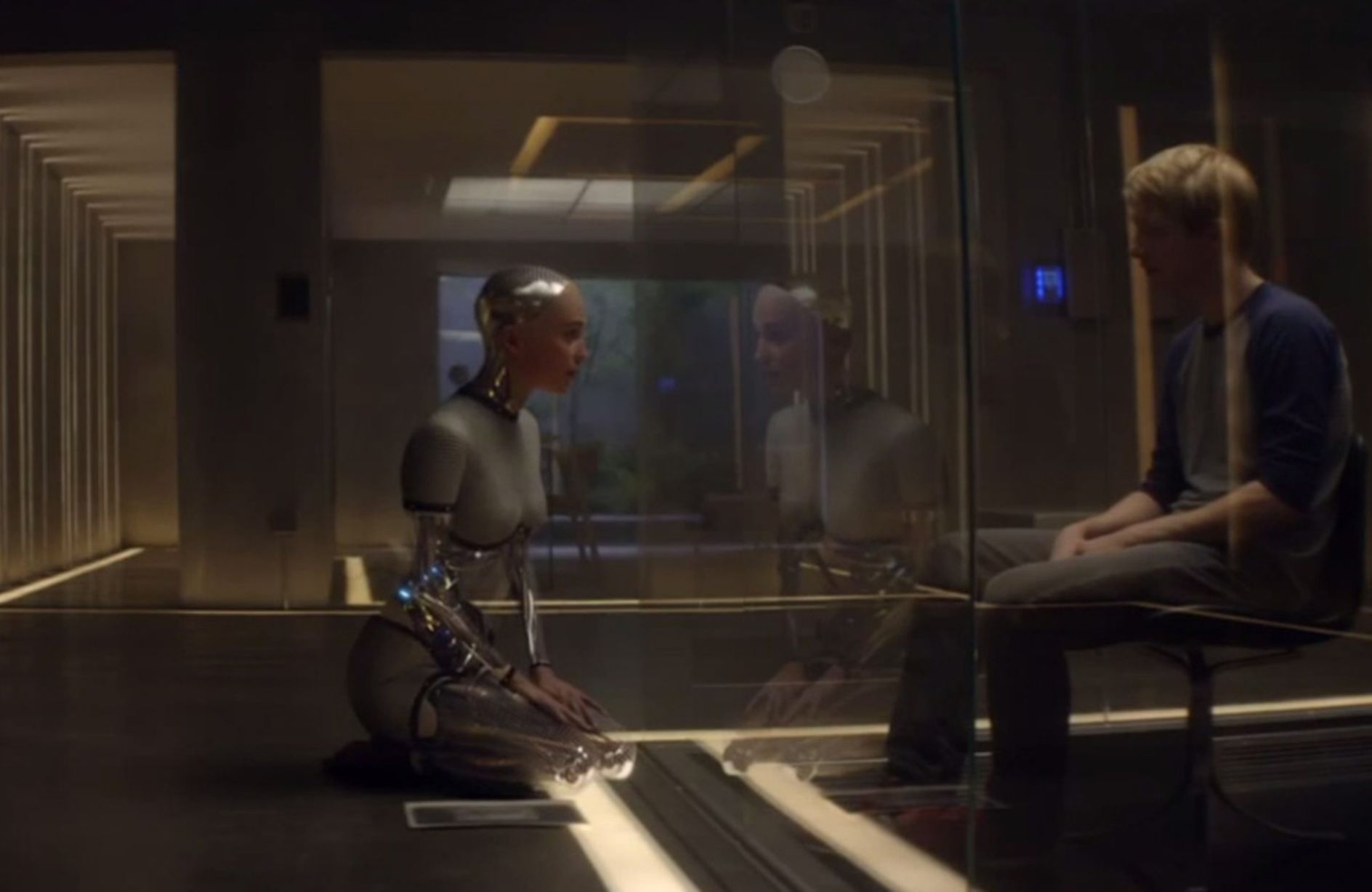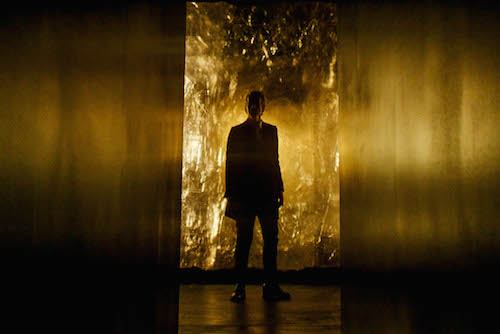Women in AI Boxes: Ex Machina and the Other Turing Test
 Another preview essay from Guided by the Beauty of Their Weapons, available for pre-order and out on December 26th, or, as I like to think of it, just in time for that Amazon gift card your aunt gave you.
Another preview essay from Guided by the Beauty of Their Weapons, available for pre-order and out on December 26th, or, as I like to think of it, just in time for that Amazon gift card your aunt gave you.
Ex Machina, the best horror story about Eliezer Yudkowsky since Nick Land’s Phyl-Undhu, is based around a sly joke about the Turing Test, namely that it secretly understands what it actually is, by which I mean what’s described in “Computing Machinery and Intelligence,” the paper in which Alan Turing supposedly establishes the damn thing. The usual reading, in which a machine is said to think if it can fool a human engaged in typed conversation with it into thinking it’s another human, amounts to a test of whether the machine can use language. This is a hard problem in computer science, although one that IBM is plausibly close to solving given that they can solve the closely related problem of beating Ken Jennings at Jeopardy!
It is also not actually what Turing says. It’s just that what Turing says is really weird. He opens his paper by saying, “I propose to consider the question, ‘Can machines think?’” Then, after concluding, not insensibly, that this question depends on too many ambiguous definitions, says that “I shall replace the question by another, which is closely related to it and is expressed in relatively unambiguous words.” Following this proclamation of relative unambiguity, he begins the immediate next paragraph by saying, “the new form of the problem can be described in terms of a game which we call the ‘imitation game,’” which is, to say the least, not a great start to relative unambiguity.
It is, however, pretty much how he means to go on. The imitation game is straightforward enough, and consists of “a man (A), a woman (B), and an interrogator (C)” who engages in written conversation with the unseen man and woman and tries to discern which is which. Having described this game, he says, “we now ask the question, ‘What will happen when a machine takes the part of A in this game?’ Will the interrogator decide wrongly as often when the game is played like this as he does when the game is played between a man and a woman? These questions replace our original, ‘Can machines think?’” But of course there’s a massive and cratering ambiguity here: does it matter that the machine is taking the part of A and not B?
Certainly the dominant reading is that it does not matter; that the Turing Test is simply the imitation game played between a human and a computer instead of a man and a woman. And this view is reinforced by the remainder of the paper, which frames the question in terms of the basic state of computer science in 1950, which is to say, over very fundamental questions that turned out to still be monstrously difficult such that IBM still hasn’t quite solved them.…

 Moffat must go.
Moffat must go.

 I’m joined this week by Elliot Chapman, Big Finish’s Ben Jackson, for an utterly spellbinding conversation about Heaven Sent and acting, including some fascinating discussion of Capaldi’s technical approach and how it compares to several of his predecessors. It’s an absolutely fantastic conversation,
I’m joined this week by Elliot Chapman, Big Finish’s Ben Jackson, for an utterly spellbinding conversation about Heaven Sent and acting, including some fascinating discussion of Capaldi’s technical approach and how it compares to several of his predecessors. It’s an absolutely fantastic conversation,  Invincible Iron Man #4
Invincible Iron Man #4 Eruditorum Press is pleased to announce the release of Pex Lives 28, on the Peter Davison non-classic Black Orchid. In this episode, Kevin and James chat the new series, the horrible fucking state of the world, John Carpenter, and Black Orchid.
Eruditorum Press is pleased to announce the release of Pex Lives 28, on the Peter Davison non-classic Black Orchid. In this episode, Kevin and James chat the new series, the horrible fucking state of the world, John Carpenter, and Black Orchid.  We don’t usually do breaking news at Eruditorum Press, but the initial reports I saw on this one were disturbing enough that I dug into it. The result, thankfully, appeared considerably less disturbing than first glance, but I’m going ahead and running the story anyway, if only as a reminder of the constant sexist background noise that pervades fandom.
We don’t usually do breaking news at Eruditorum Press, but the initial reports I saw on this one were disturbing enough that I dug into it. The result, thankfully, appeared considerably less disturbing than first glance, but I’m going ahead and running the story anyway, if only as a reminder of the constant sexist background noise that pervades fandom. Another preview essay from my end-of-year collection Guided by the Beauty of Their Weapons,
Another preview essay from my end-of-year collection Guided by the Beauty of Their Weapons,  As I’ve said many a time, what I want out of
As I’ve said many a time, what I want out of